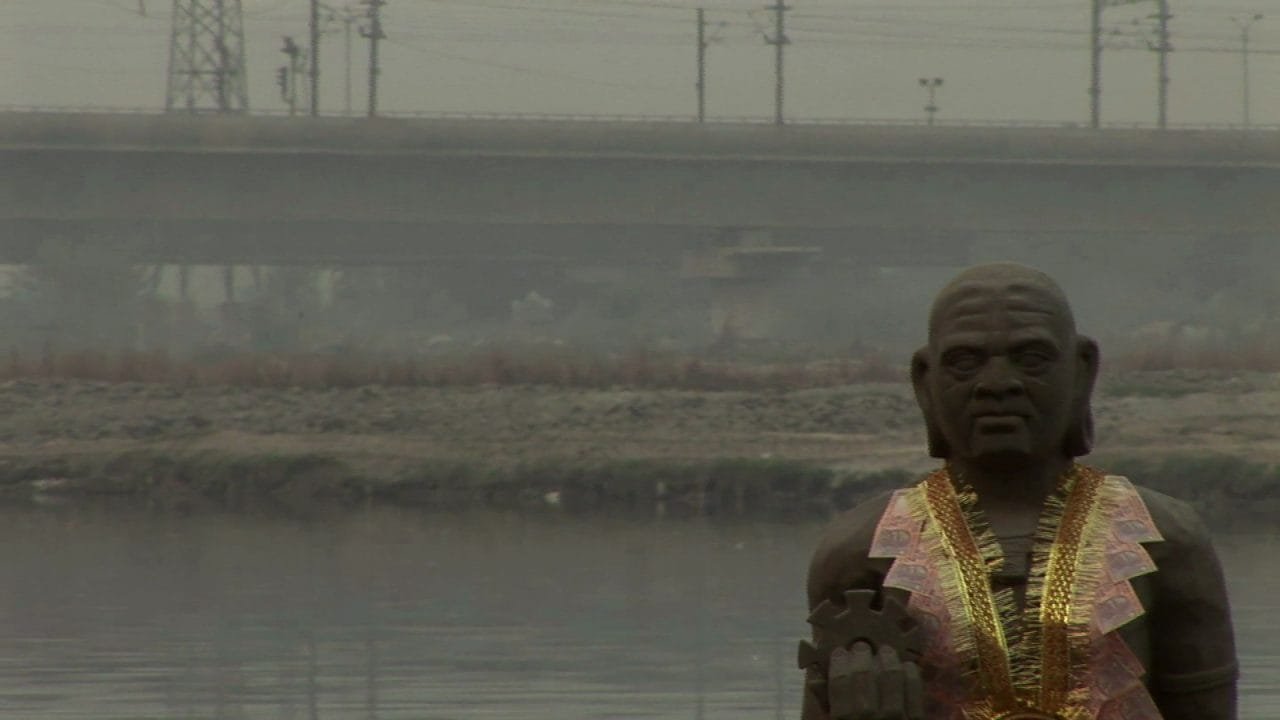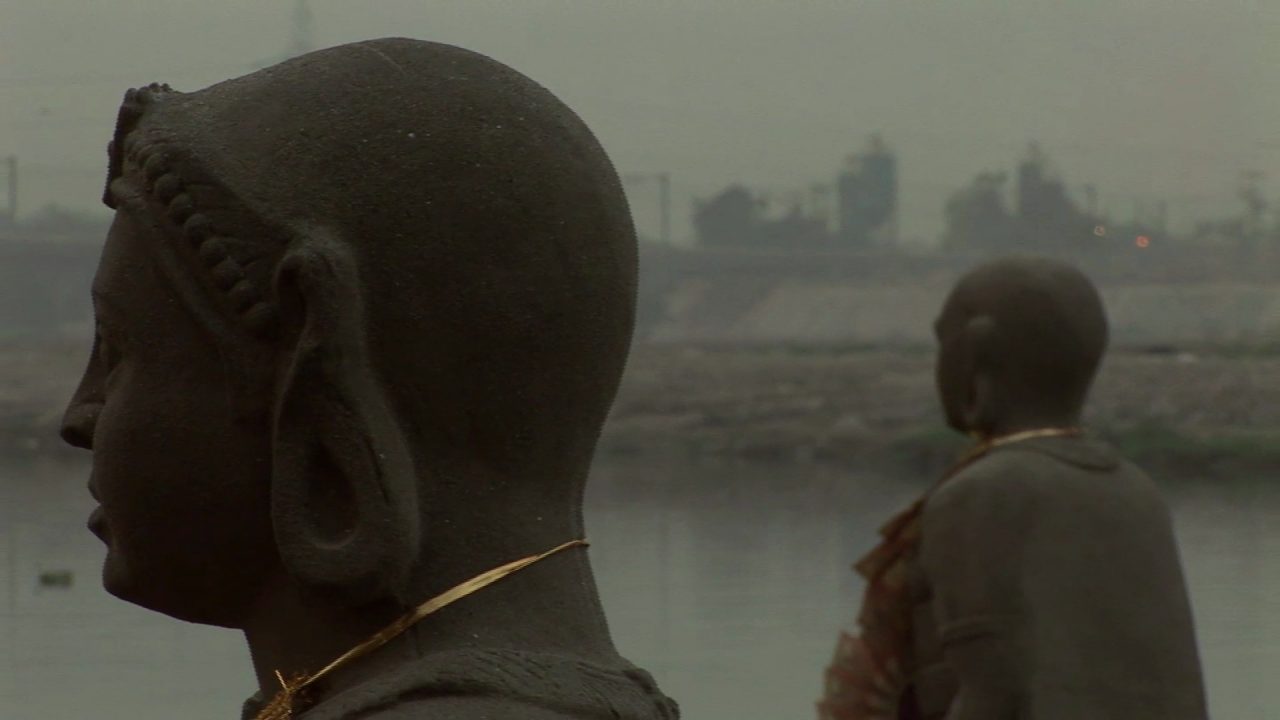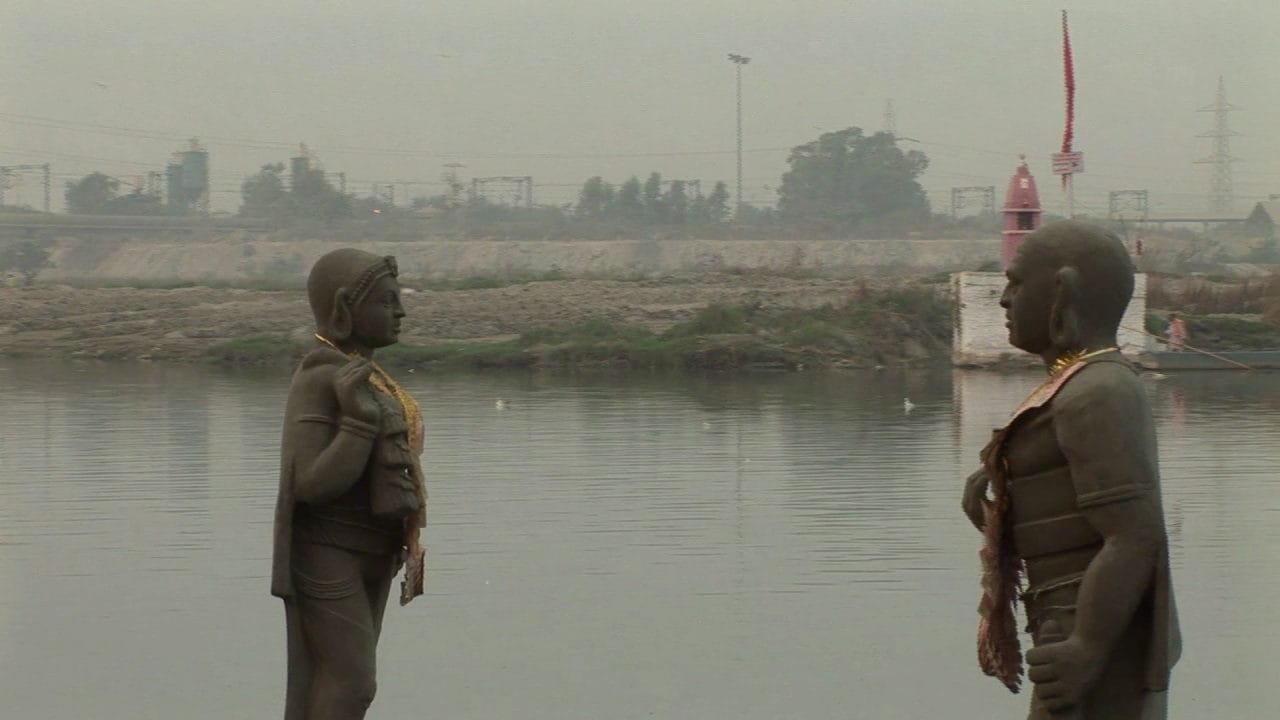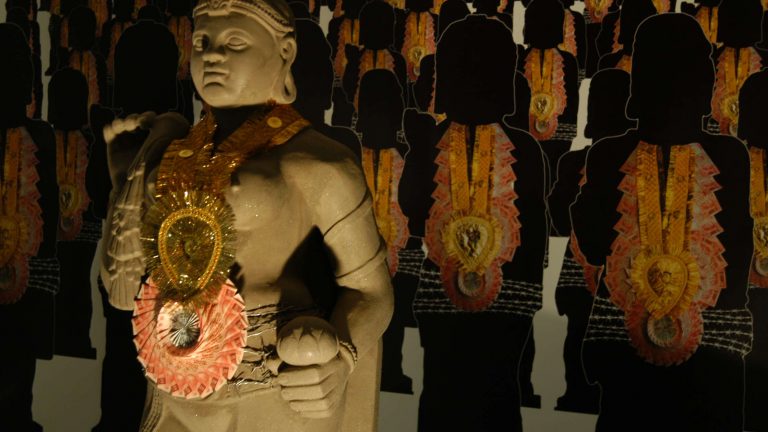Human-sized sand finish fibreglass sculptures, cash, and barbed wire ornaments, printed vinyl screen, 335 x 214 cm
MuHKA, Antwerp (2008); The Audience and the Eavesdropper, Phillips de Pury, London and New York (2008-09); Galerie Krinzinger, Vienna (2009)
The sculptural installation The Reserve Army examines the intersection of a personal artistic practice (in this case, that of the early 20th Century Indian sculptor Ram Kinkar Baij) with the construction of icons to represent the newly independent nation-state, as well as the rather clumsy union of Modernism and a traditional, folkloric Indian culture. By replicating and embellishing the Baij sculptures created to stand in front of the Reserve Bank of India, the work also addresses the recent changes that have taken place in Indian economic policies within a globalized scenario. The Interrupted Cartographer is like a theatrical prop without an actor, a stylized and illuminated table with chair that speaks of historical divisions and negotiated compromises.
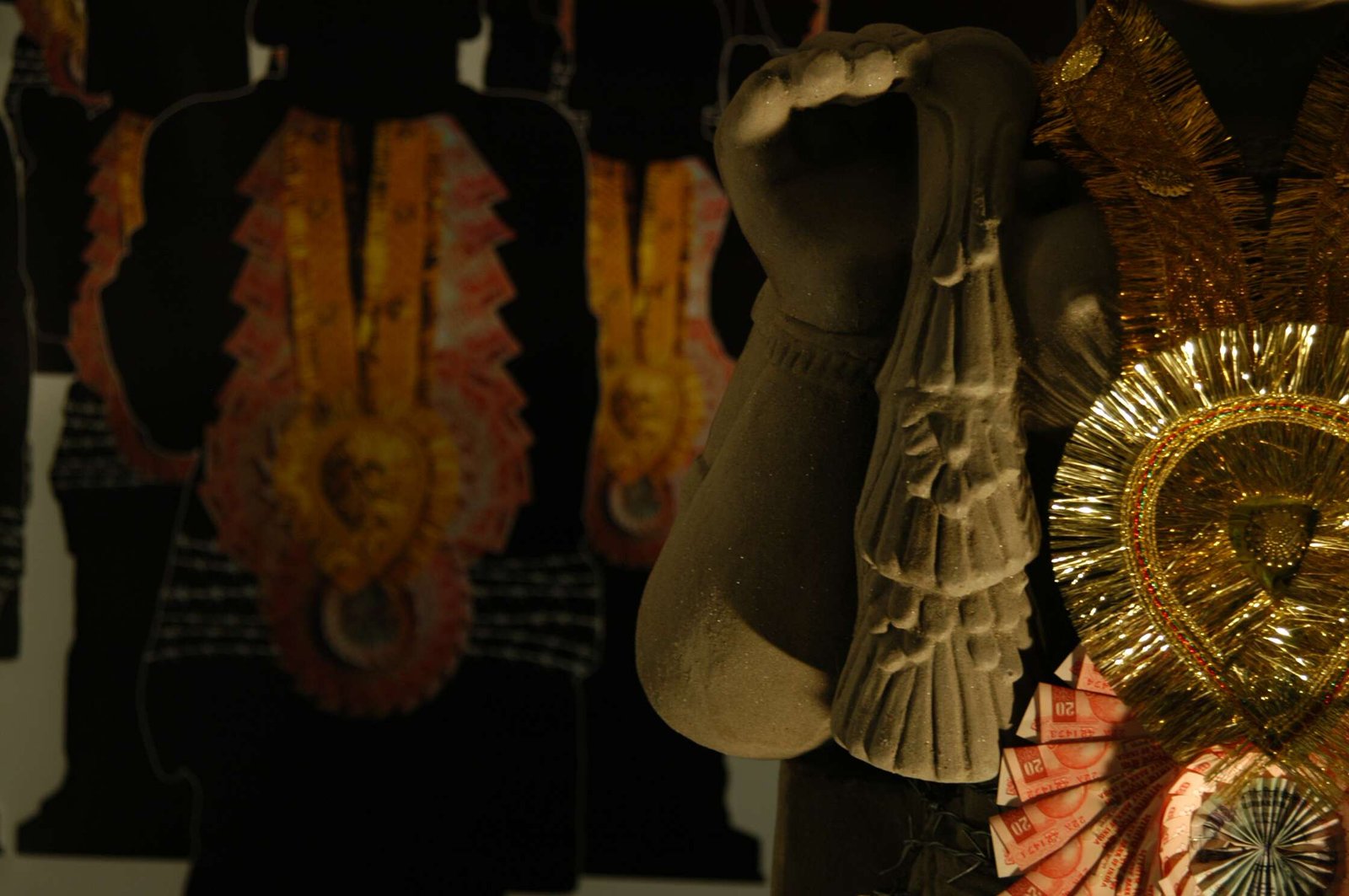
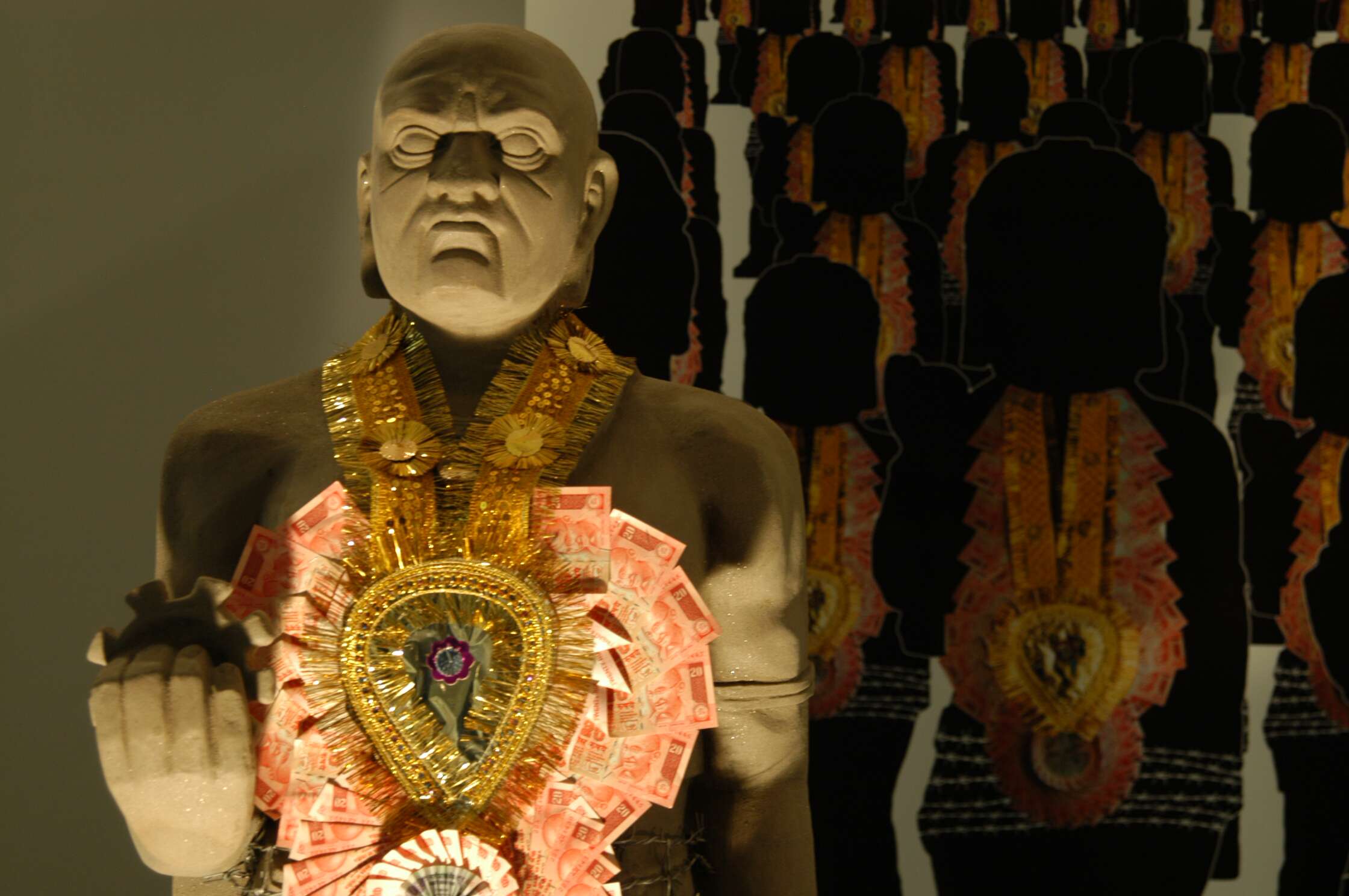
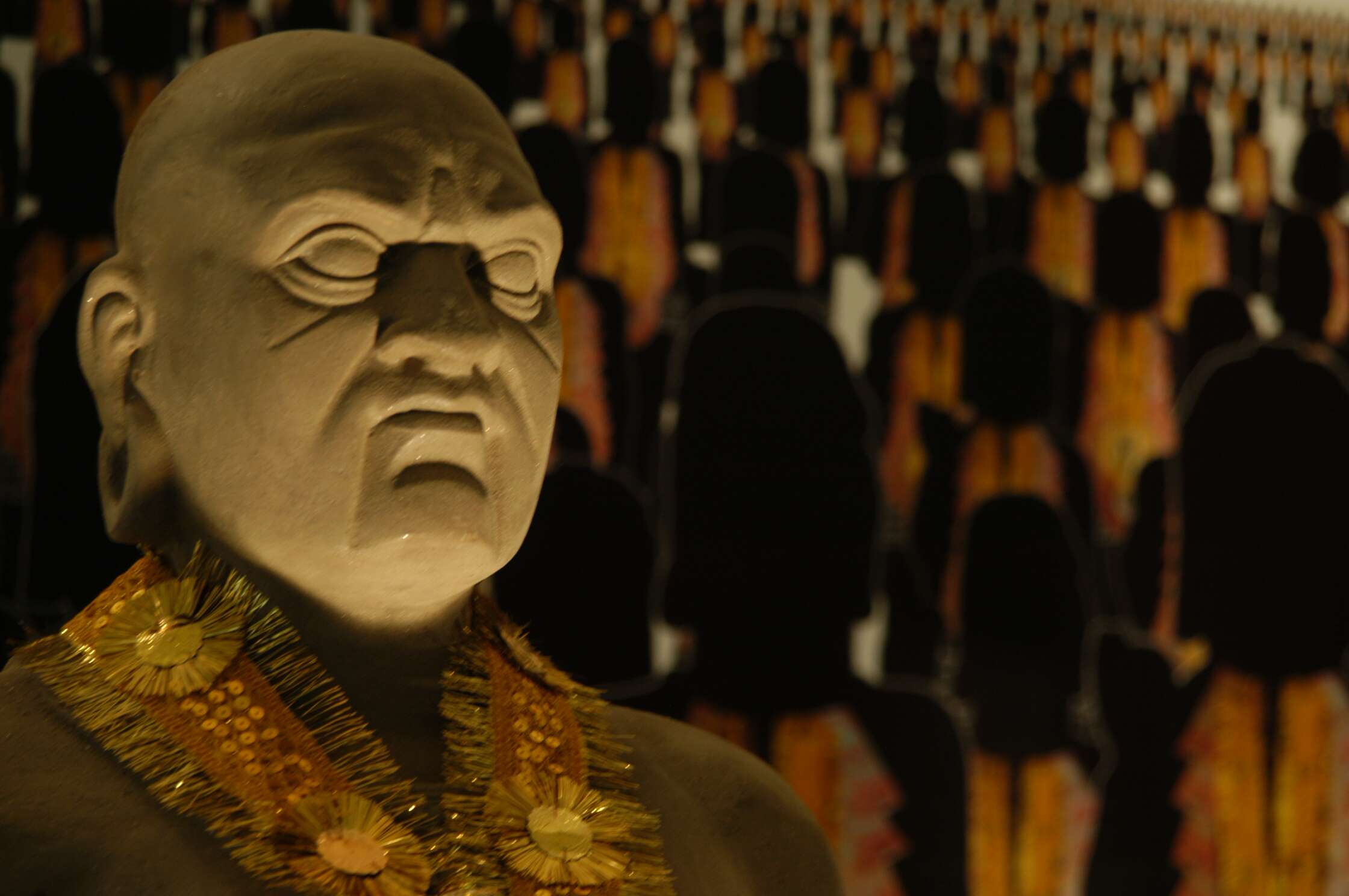
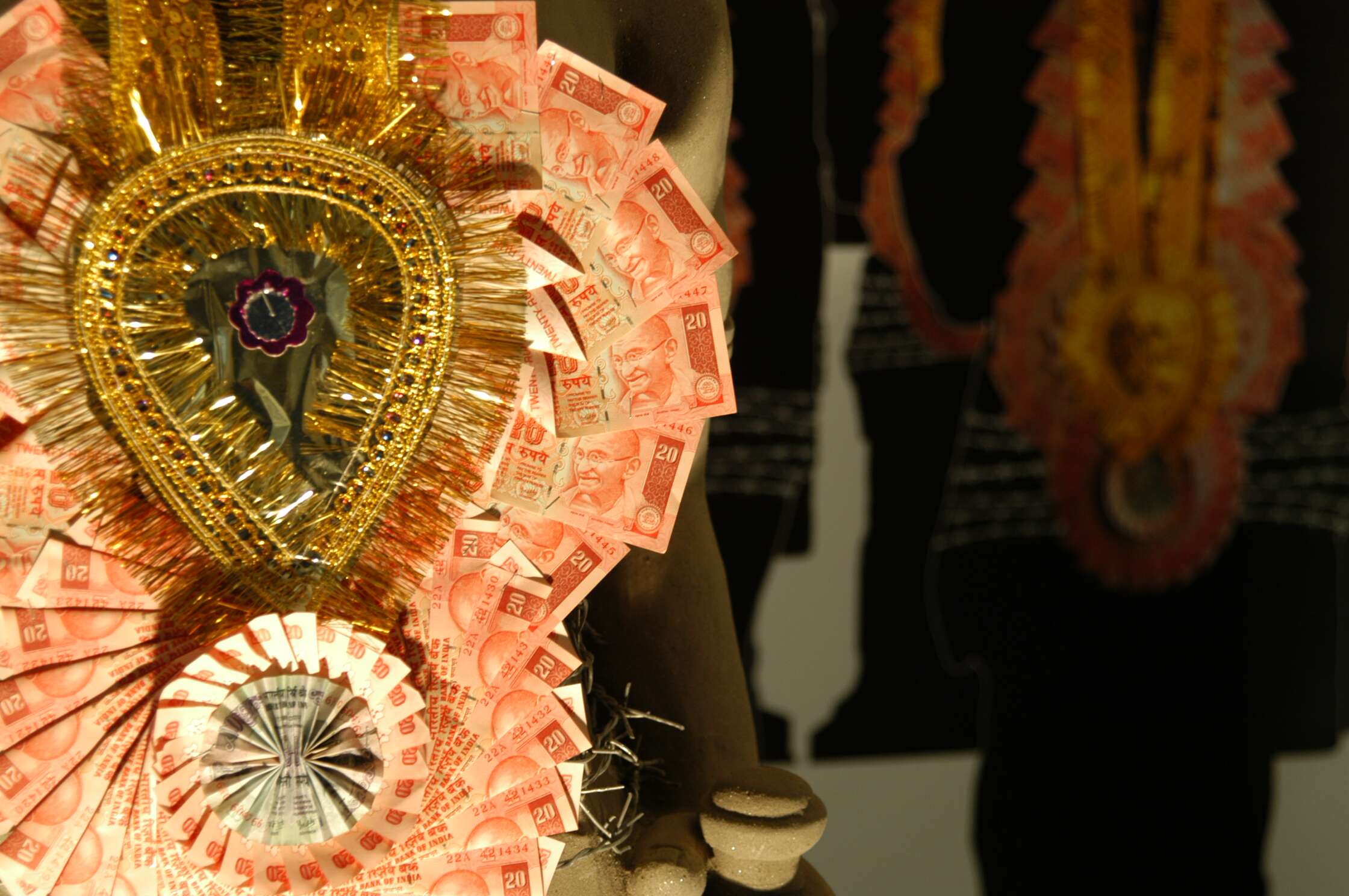
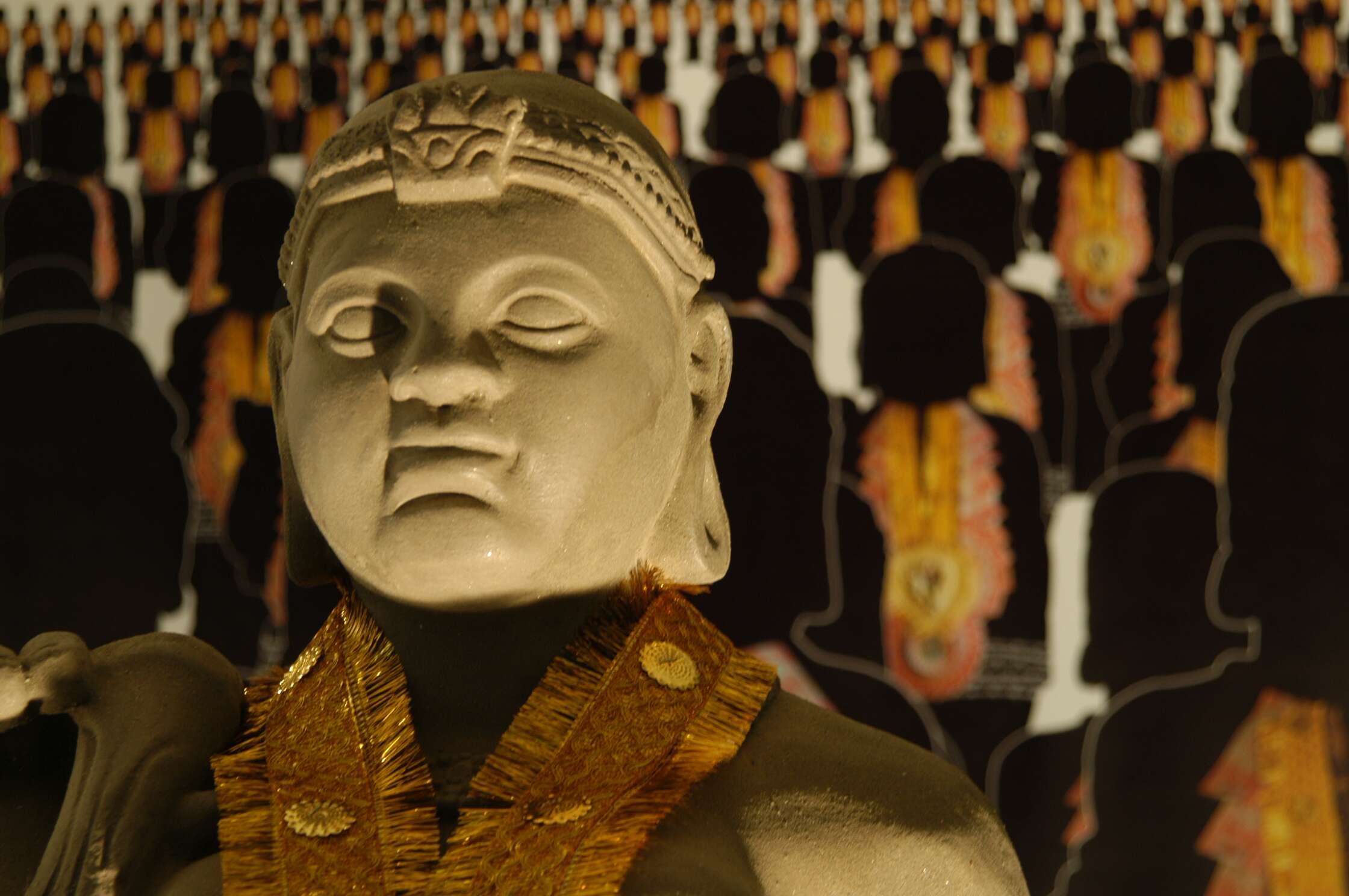
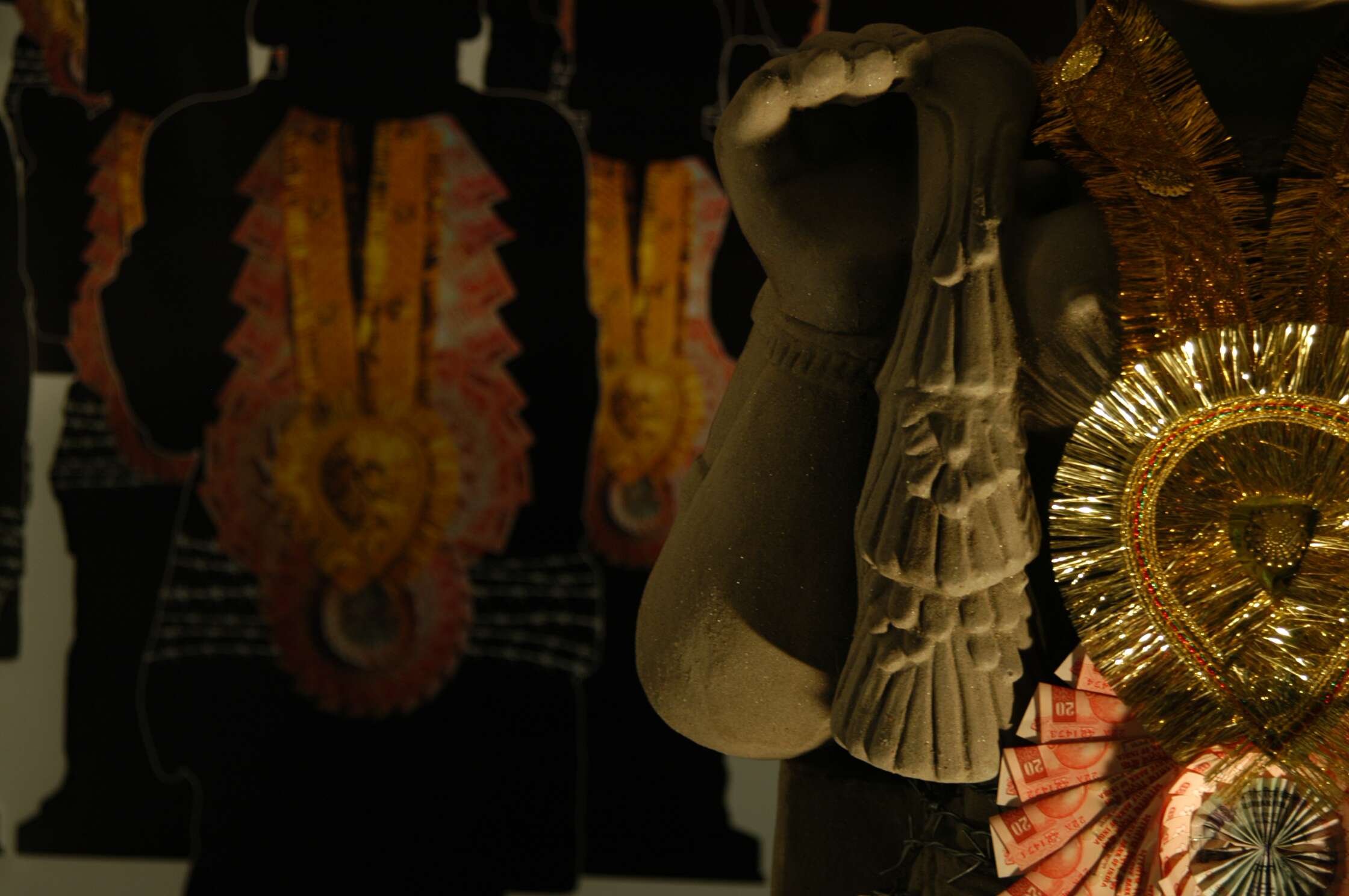
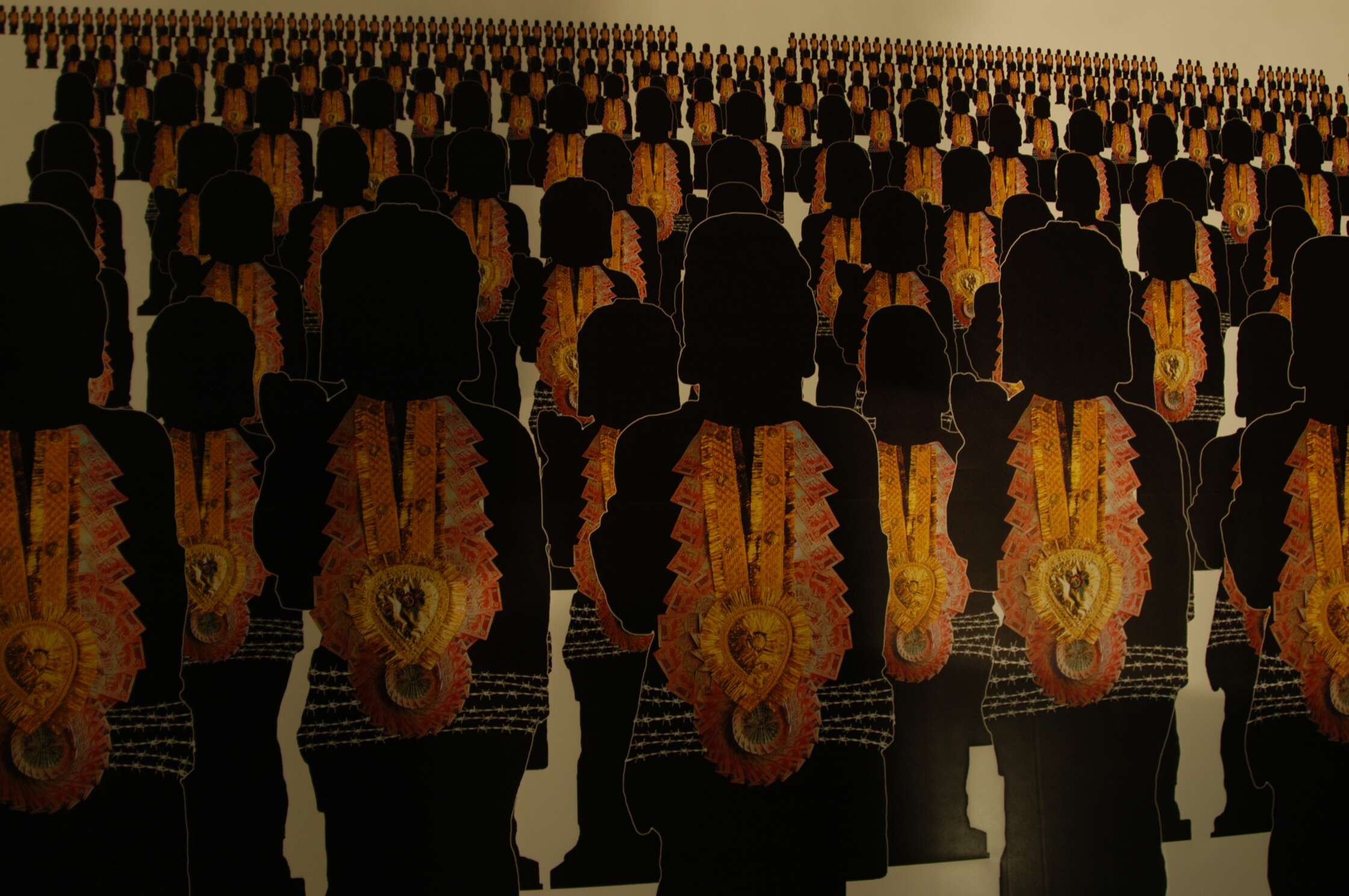
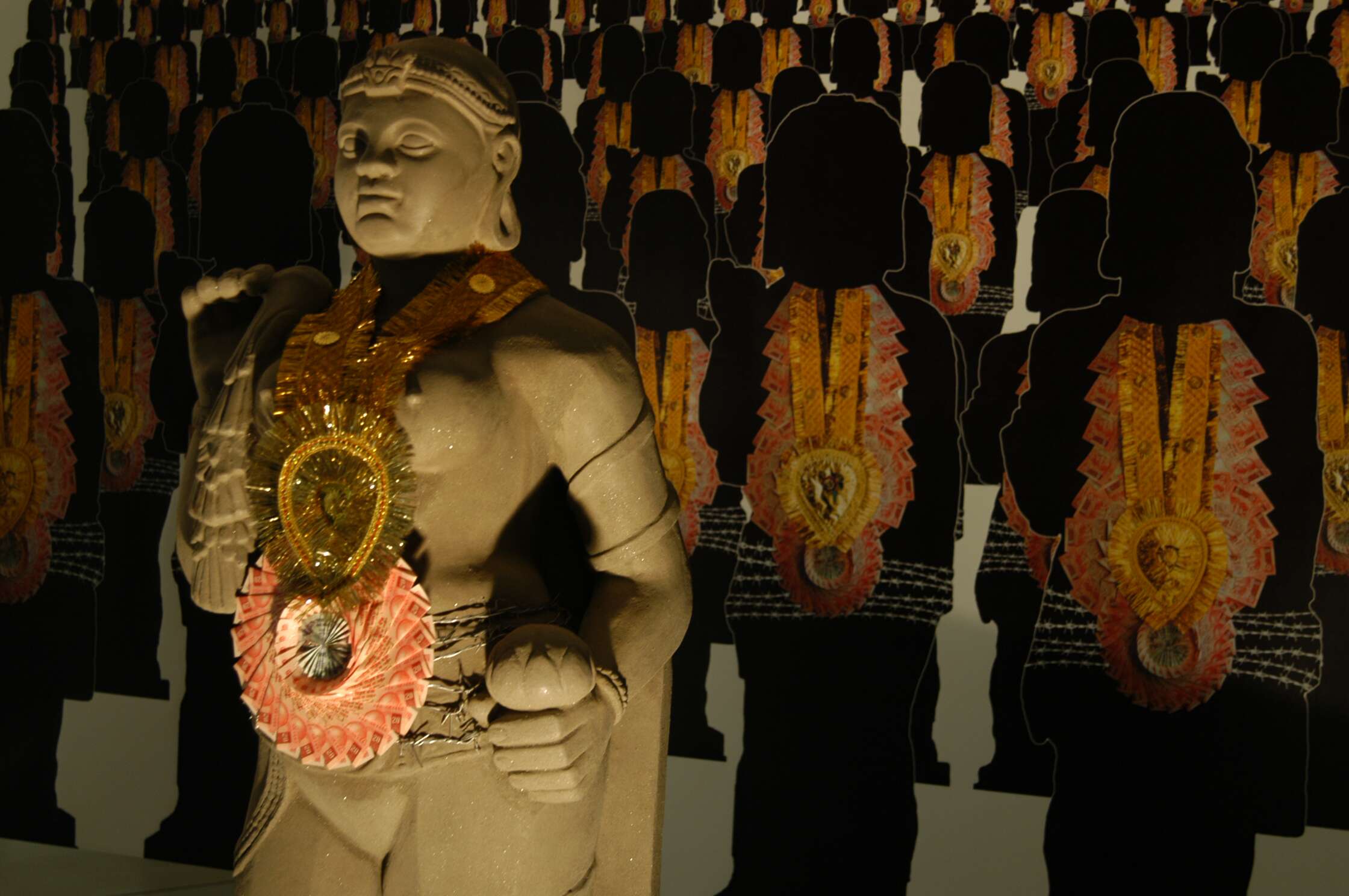
Carbon Twilight
Video Loop
Duration: 3:13 minutes
Untimely Calendar/Asamayavali, National Gallery of Modern Art (NGMA), Delhi (2014)
The gatekeepers of the treasury have left the gates of the bank to stand guard over the twilight. A consignment of carbon moves between undisclosed stations under their watch. Sometimes, the shortest distance between the coalmine and the bank is a gap between the lines. Between day and night, light and darkness, the accumulated traces of time hidden in the earth as carbon disappear and reappear under different guises, sometimes as wealth, at other times as poison. Only the gatekeepers know which is which.
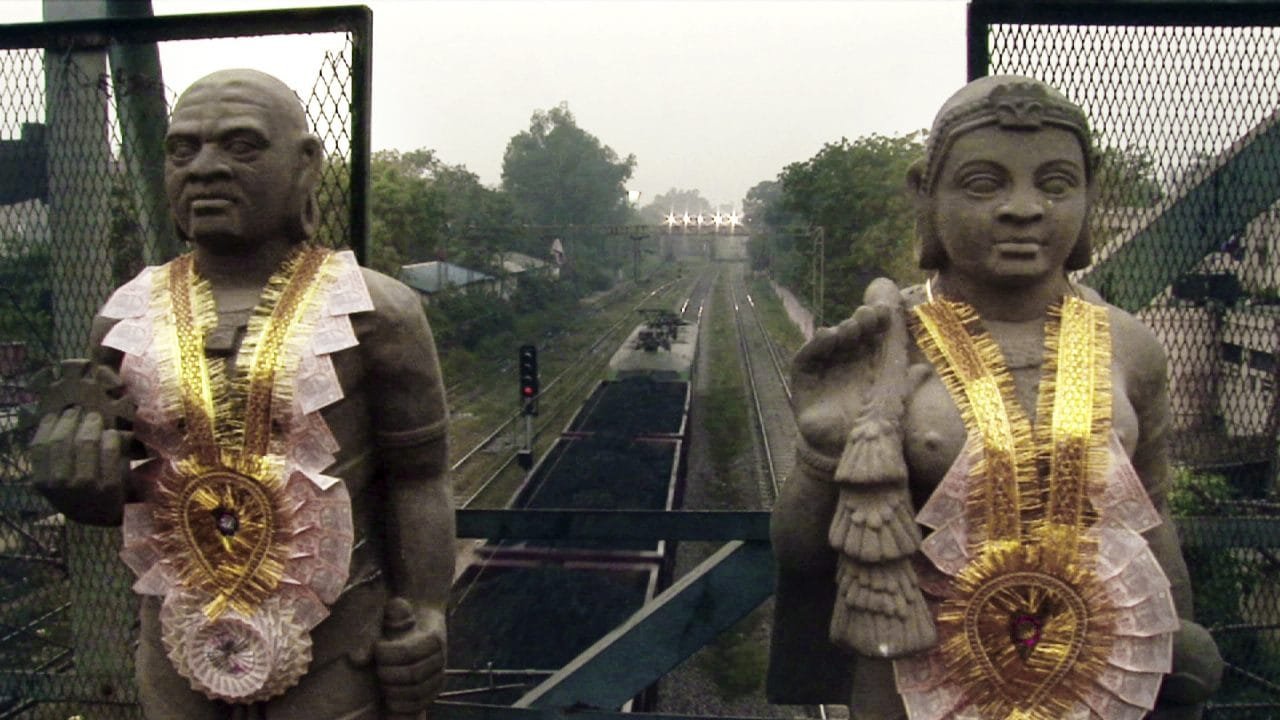
Video (prologue)
Duration: 11:00 minutes
Serpentine Gallery, London (2008); National Gallery of Modern Art (NGMA), New Delhi (2014)
The film features the wandering figures of a Yaksha and a Yakshi, mythic male and female guardians of treasure, and keepers of riddles in different Indic traditions. The Yaksha and Yakshi sleepwalk away from the doors of a treasury (riffing off the enormous sculptures by modern master Ram Kinkar Baij at the gates of the Treasury of the Govt. of India).
Unattended questions, ascending and descending, forgotten in the long vigil spent in the relentless shepherding of capital, lie scattered in the landscape of their nocturnal adventures. Dreams, visions, and riddles begin to gather, crowding the tail of this sleepwalking caravan. The Yaksha and the Yakshi provide a crepuscular subjectivity to a landscape, their gaze passing, leaving open the question whether the guardians of wealth are leaving the city or entering it.
